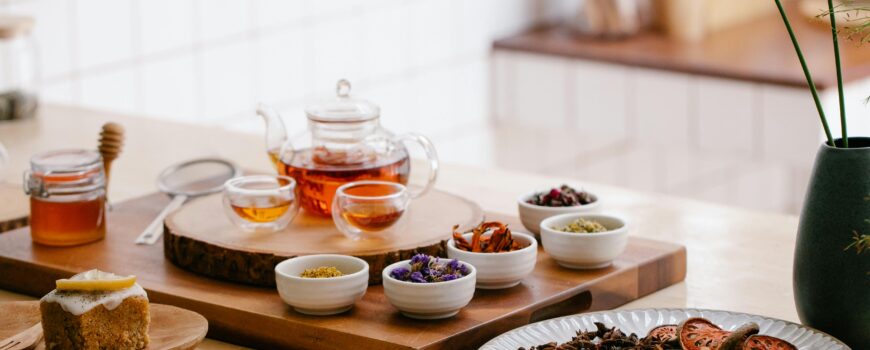Starting a tea business can be a rewarding venture, given the global love for tea and its growing market. Whether you’re planning to sell loose leaf tea, tea bags, or open a tea café, understanding the fundamentals of the tea business is crucial. This guide provides detailed information on how to start and run a successful tea business.
1. Market Research and Business Plan
Market Research:
- Understand the Market: Study the current tea market, consumer preferences, and trends. Identify the types of tea that are popular and the potential gaps you can fill.
- Target Audience: Determine your target demographic. Are you catering to health-conscious consumers, luxury tea buyers, or casual drinkers?
- Competitor Analysis: Analyze your competitors, their strengths, weaknesses, and unique selling points.
Business Plan:
- Executive Summary: Outline your business concept, goals, and vision.
- Product Line: Detail the types of tea you will offer (e.g., green, black, herbal, specialty blends).
- Marketing Strategy: Plan how you will promote your business and attract customers.
- Financial Plan: Include startup costs, pricing strategy, projected revenue, and funding sources.
- Operations Plan: Describe the logistics, supply chain, and daily operations of your business.
2. Sourcing Quality Tea
Choosing Suppliers:
- Reputable Suppliers: Source from reliable suppliers or tea estates known for quality. Consider visiting tea farms to ensure the quality of the leaves.
- Organic and Fair Trade: Consider offering organic and fair trade teas to appeal to environmentally and socially conscious consumers.
Types of Tea:
- Loose Leaf vs. Tea Bags: Decide whether to sell loose leaf tea, tea bags, or both.
- Variety: Offer a variety of teas such as green, black, oolong, white, herbal, and specialty blends to cater to different tastes.
Branding and Packaging
Brand Identity:
- Brand Name and Logo: Choose a memorable name and design a logo that reflects your brand’s personality and values.
- Brand Story: Craft a compelling story that connects with your customers and sets you apart from competitors.
Packaging:
- Quality and Design: Invest in high-quality, attractive packaging that preserves the freshness of the tea. Consider eco-friendly options.
- Information: Include essential details on the packaging such as tea type, origin, brewing instructions, and health benefits.
4. Setting Up Operations
Location:
- Retail Space: If opening a tea shop or café, choose a location with high foot traffic and visibility.
- Online Store: Create a user-friendly e-commerce website to reach a broader audience.
Licensing and Permits:
- Business License: Obtain the necessary business licenses and permits required in your area.
- Food Safety: Ensure compliance with food safety regulations and standards.
Supplies and Equipment:
- Tea Brewing Equipment: Invest in quality brewing equipment if you’re serving tea on-site.
- Storage: Ensure proper storage conditions to maintain the quality of the tea leaves.
5. Marketing and Sales
Online Marketing:
- Website: Create a professional website with an online store, blog, and contact information.
- Social Media: Use social media platforms to promote your products, engage with customers, and build a community.
- SEO and Content Marketing: Optimize your website for search engines and create valuable content related to tea to attract organic traffic.
Offline Marketing:
- Local Events: Participate in local fairs, markets, and events to increase brand awareness.
- Collaborations: Partner with local businesses such as cafes and wellness centers to reach more customers.
Customer Service:
- Training: Train your staff to provide excellent customer service and knowledgeable tea recommendations.
- Loyalty Programs: Implement loyalty programs to encourage repeat business.
6. Financial Management
Startup Costs:
- Initial Investment: Estimate the initial costs for inventory, equipment, licenses, and marketing.
- Funding: Explore funding options such as personal savings, loans, or investors.
Pricing Strategy:
- Competitive Pricing: Set your prices competitively while ensuring a profitable margin.
- Value Proposition: Justify premium pricing with high-quality products and exceptional service.
Financial Tracking:
- Accounting Software: Use accounting software to track expenses, sales, and profits.
- Budgeting: Regularly review and adjust your budget to manage cash flow effectively.
7. Scaling Your Business
Expansion:
- New Products: Introduce new tea varieties, accessories, or complementary products.
- New Locations: Consider opening additional retail locations or expanding your online presence.
Franchising:
- Model: Develop a franchising model if you wish to expand rapidly and have a proven business concept.
- Support: Provide training and support to franchisees to maintain brand consistency.
Partnerships:
- Wholesale: Supply your tea to other businesses such as cafes, restaurants, and retail stores.
- Collaborations: Collaborate with influencers or other brands for co-branded products and promotions.
Conclusion
Starting a tea business involves thorough planning, quality sourcing, effective branding, and continuous market engagement. By focusing on delivering high-quality products and excellent customer service, you can build a successful and sustainable tea business. Stay adaptable, continuously innovate, and connect with your customers to grow your brand in the competitive tea market.
Zircon Tea Company
Contact No is +91-9499347308
Email is info@zirconshop.in
Our You Tube Channel Is Zircon Tea Company





